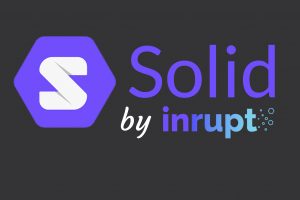“What is a Data space?”- conversing with Nina Popanton
In a quest to gain a comprehensive understanding of data spaces, their main players, and their future trajectory, our team has been actively engaging with key actors in the data space ecosystem. As part of this endeavor, our COO Louis, recently conducted a captivating interview with Nina Popanton. This post marks the first installment in a series of three, offering an insightful introduction to the broader landscape of data spaces in Europe. By delving into general reflections on the topic, the interview lays the groundwork for deeper exploration and sheds light on the evolving nature of data spaces in the region.
Louis Cousin: Can you tell us who you are and what you do with data spaces?
Nina Popanton: For a few years I am deeply involved in the data ecosystem in Europe, until recently I have been team lead of the Data Intelligence Initiative (DIO) in Austria and have developed and co-created use cases for data spaces with our network. In terms of my academic background, I’m a development researcher, which is why I approach things from a macroeconomic perspective. Just recently, I have started my new chapter as business developer for the Telekom Data Intelligence Hub (T-Systems International).
LC: You’ve been working in this ecosystem for a few years now..?
NP: I entered this ecosystem about three years ago, coming from a completely different profession. I used to consult stock exchange-listed companies and the real estate sector in their public positioning and communications. Anyways, I think that helped me to dive into the topic – I believe, specifically such companies will play a significant role in data-driven innovation.
LC: How would you describe a data space?
NP: To me, data spaces represent a federated data exchange network where companies can share data along various supply chains and value chains. What’s important to me is that we’ve discovered a new way of sharing data, not just one-to-one, but one-to-many or even many-to-many. That’s the significant innovation surrounding dataspaces.
LC: Why are data spaces important?
NP: I believe the significance lies in the fact that many inefficiencies that existed before can now be a thing of the past. Take supply chains, for example : in industries like manufacturing, we can now have visibility and control not only over the first and second tiers, but up to six, seven or even more tiers. This allows to identify and address quality issues from the very beginning, rather than just realizing after receiving the final product. Thus, the economy becomes more efficient, quality-focused, and agile.
LC: What types of industries are involved in this ecosystem?
NP: That’s a great question with multiple aspects. Initially, like many innovations, data spaces emerged from research. However, what’s exciting about dataspaces is that it benefits not just one industry, but every sector of our economy that deals with data – which is literally every sector. Data has become a central resource across industries, whether it is manufacturing, energy, mobility, and many more. Data is omnipresent.
LC: Are data spaces meant only for businesses?
NP: While businesses naturally benefit from dataspaces by reducing inefficiencies, it is not limited to them. Governments, public bodies, and other stakeholders can also reap the rewards. It is crucial for economic players to collaborate with political players to support in shaping related regulations that allow us to fully exploit the potential of data spaces.
LC: Thank you, Nina, for your insights and for sharing your experience in the data space ecosystem. It’s been really informative and interesting to hear about your work.
NP : Thank you so much for having me.



